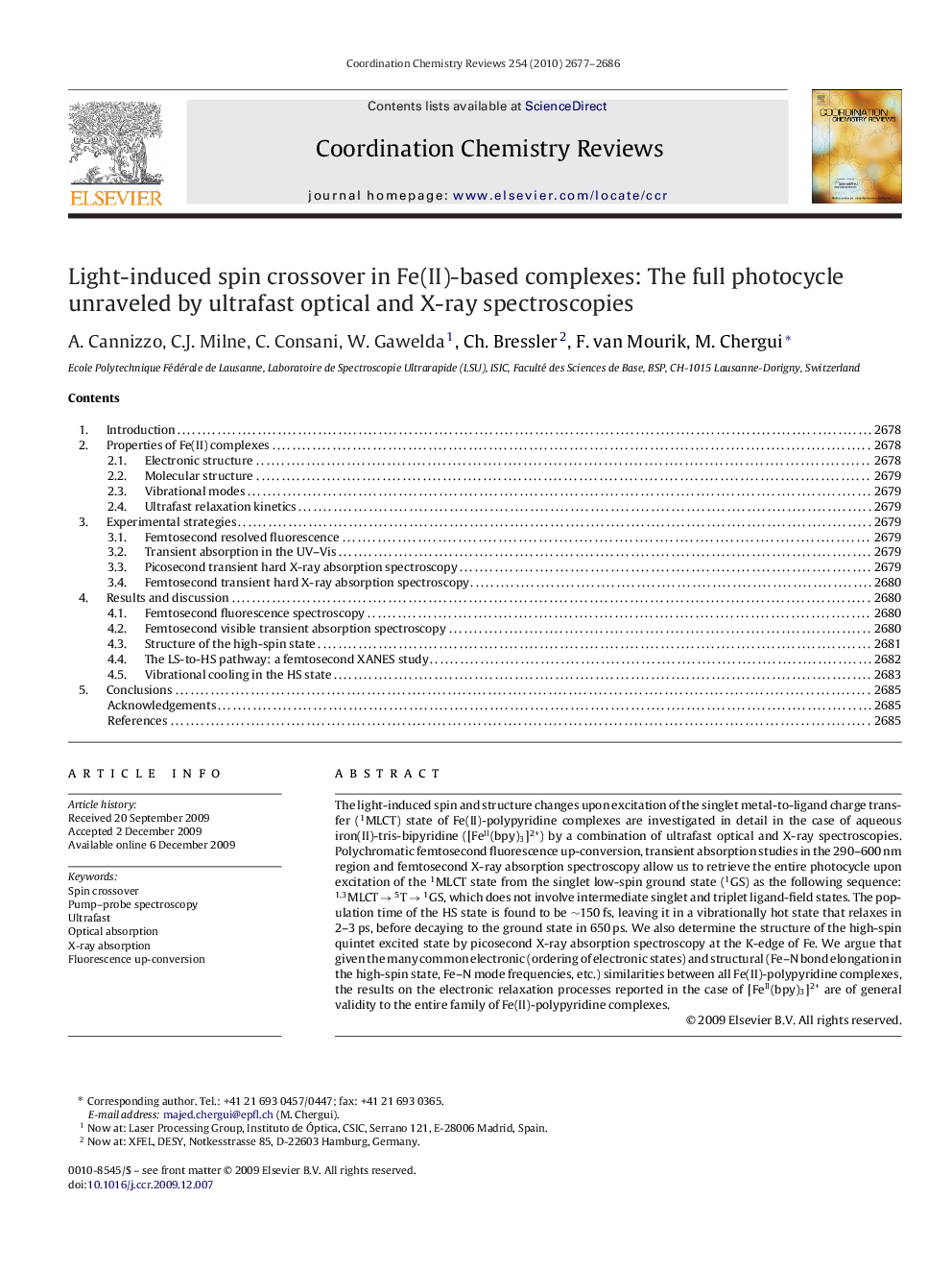| Article ID | Journal | Published Year | Pages | File Type |
|---|---|---|---|---|
| 1299818 | Coordination Chemistry Reviews | 2010 | 10 Pages |
The light-induced spin and structure changes upon excitation of the singlet metal-to-ligand charge transfer (1MLCT) state of Fe(II)-polypyridine complexes are investigated in detail in the case of aqueous iron(II)-tris-bipyridine ([FeII(bpy)3]2+) by a combination of ultrafast optical and X-ray spectroscopies. Polychromatic femtosecond fluorescence up-conversion, transient absorption studies in the 290–600 nm region and femtosecond X-ray absorption spectroscopy allow us to retrieve the entire photocycle upon excitation of the 1MLCT state from the singlet low-spin ground state (1GS) as the following sequence: 1,3MLCT → 5T → 1GS, which does not involve intermediate singlet and triplet ligand-field states. The population time of the HS state is found to be ∼150 fs, leaving it in a vibrationally hot state that relaxes in 2–3 ps, before decaying to the ground state in 650 ps. We also determine the structure of the high-spin quintet excited state by picosecond X-ray absorption spectroscopy at the K-edge of Fe. We argue that given the many common electronic (ordering of electronic states) and structural (Fe–N bond elongation in the high-spin state, Fe–N mode frequencies, etc.) similarities between all Fe(II)-polypyridine complexes, the results on the electronic relaxation processes reported in the case of [FeII(bpy)3]2+ are of general validity to the entire family of Fe(II)-polypyridine complexes.
